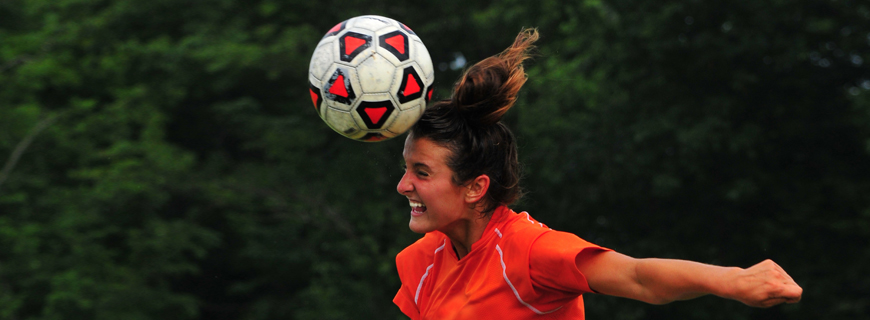Staying Ahead of the Game: Concussions in Youth Soccer

Back to physical health resource hub
Concerns over concussions are coming to a head as the world’s most popular sport faces scrutiny over one of its most iconic maneuvers.
Soccer is not the leading sport linked to concussions. However, there is still a major concern with women’s soccer ranking third and men’s soccer sixth for concussion occurrences in all sports. With over 8 million youth soccer players in the US alone, people are starting to pay closer attention to the causes.
Cause for Concern
Research from the Concussion Legacy Foundation at Santa Clara University has shown that over 30% of concussions in soccer are related to heading the ball. Youth players who attempt heading the ball often collide with other players or the ground resulting in more than 30,000 concussions each year.
Purposefully heading the ball is a legal and encouraged maneuver. However, written guidelines from soccer governing bodies recommend not introducing heading until age ten. Unfortunately, the guidelines have not been widely enforced, and soccer players have reported beginning to engage in heading as young as age three.
Adding to the concern, 11% of children who suffer a concussion still have symptoms three months later. These symptoms can affect memory, attention, and emotional responses.
Prevention Measures
The good news is that U.S. Soccer recently announced a series of safety initiatives aimed at curbing concussions in youth soccer. These rules strictly prohibit players 10 and younger from heading the ball. Additionally, the measures call for reductions in practicing the maneuver for 11- 13 year olds.
Some estimates indicate that delaying the headers until age 14 could prevent tens of thousands of concussions among middle school aged players.
Strengthening
Abstaining from practicing the maneuver is not the only line of defense for players who want to avoid butting heads with concussions. A combination of smart training and preventative safety measures could significantly reduce the overall risk of a head injury.
There is evidence that having a strong neck may help reduce risk of concussions. Younger athletes typically have weaker necks. In a study of over 6,700 high school athletes, greater neck strength was significantly correlated with reduced risk of concussions.
Certified Sports Therapists and trainers can work with athletes to offset the risk of concussions through resistance and range of motion training. Often, they will use head harnesses and pulley systems not widely available at most gyms.
Always remember that if an athlete sustains a concussion, an appropriate return to sport protocol should be followed to ensure symptom resolution and safety of the athlete.
For out more information about the Brooks Concussion Program.


